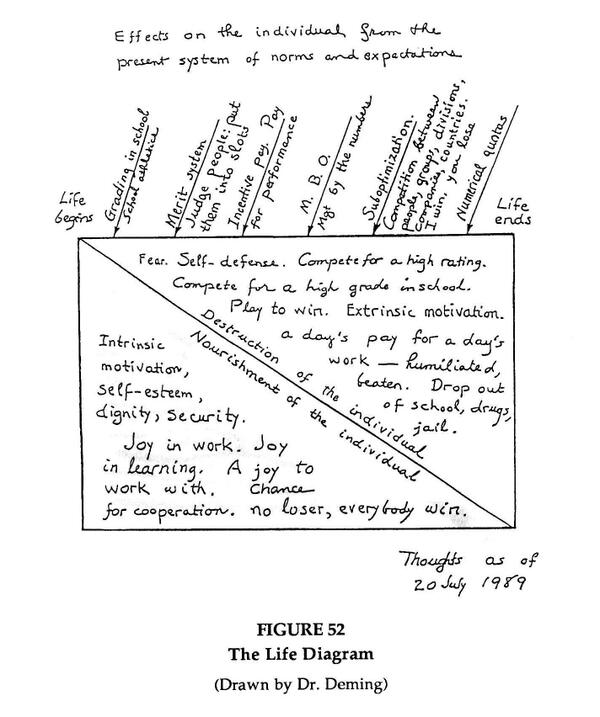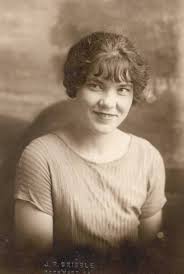
The fin de siècle newspaper proprietor / F. Opper, 1894, Puck. Summary: Print shows a newspaper owner, possibly meant to be Joseph Pulitzer, sitting in a chair in his office next to an open safe where “Profits” are spilling out onto the floor; outside this scene are many newspaper reporters for the “Daily Splurge” rushing to the office to toss their stories onto the printing press, such stories as “A Week as a Tramp!! Wild and Exciting Experiences of a Daily Splurge Reporter”, “A Reporter of the Daily Splurge Spends a Thrilling Week in an Asylum!”, “An Organ Grinder’s Life”, “Life in Sing Sing – a Splurge Reporter in Disguise”, “Divorce Court Details”, “Private Scandal”, “a Night Around Town” by a woman reporter “in Men’s Attire”, life on the streets “As a Flower Girl”, “Thrilling Exposé”, “How beggars are treated on 5th Ave. by Fanny Fake”, and “High Spiced Sensation”. A notice hanging on the wall of the office states “The Motto of the Daily Splurge – Morality and a High Sense of Duty.” Library of Congress image
You’ve been watching news on TV all your life (you should have been reading your local daily newspaper, too . . . but I digress), and you hate to admit you’re having a tough time telling when Trump lies to you, or someone lies about Trump.
There is help available, for thinking people.
EdTechAdvocate features technology the editors consider useful for teachers and students in schools.
Occasionally school overlaps with real life.
Here are eight apps the publication recommends for teachers and students, to help them use their critical faculties to determine what news is accurate, and what news isn’t. From an article by Micheal Lynch.
No reason we shouldn’t use these tools for everyone, even people out of school for decades.
The recommendations, and links to the eight tools:
As fake news, biased media, and internet hoaxes abound, students need to be taught digital literacy from the time they start using computers. Fortunately, there are resources available for students to check their facts.
This site provides balanced news from all perspectives, so students can sort through facts and distinguish between differences in opinions easily. The site also offers a specialized search option where you filter results. Additionally, it offers a school toolbox with a variety of useful resources and lesson plans.
Teaching students how to evaluate websites and information is a necessary skill. The CRAAP Test designed by Meriam Library, California State University, Chico is helpful in guiding students through evaluating the currency, relevance, authority, accuracy, and purpose of information.
This website is a non-profit, nonpartisan site which is a Project of The Annenberg Public Policy Center allows students to ask questions and search. Additionally, it also allows students to ask science questions on public policy issues.
This website focuses on debunking hoaxes or urban legends, as well as email hoaxes and internet scams. It also provides information on how to protect your email and computer.
Using a Truth-O-Meter (true, mostly true, mostly false, and false), Politifact rates the accuracy of claims. It focuses on politicians.
One of the original fact-checking websites, Snopes is a popular site for identifying misinformation and debunking internet rumors. Students can search with keywords or by plugging in a URL.
The Ted-Ed video, “How to Choose Your News” by Dan Brown is designed for students. Using imagery and explanations they will understand, Dan Brown explains how to be a critical thinker and savvy evaluator when it comes to reading (or watching) the news.
Another website that focuses on debunking internet rumors, e-mail hoaxes, and questionable images where students can search information as well.
Teachers need to explain how media biases work and change facts to fit their needs. By teaching students to use fact checking tools, teachers are strengthening their digital literacy skills.

Detail from “Fin de seicle newspaper proprietor,” by F. Opper, 1894, Puck Magazine. Library of Congress image via Wikipedia
What are your favorite sources of solid information, and what are your methods of determining who is pulling your leg, and who is not?



 Posted by Ed Darrell
Posted by Ed Darrell 

























































